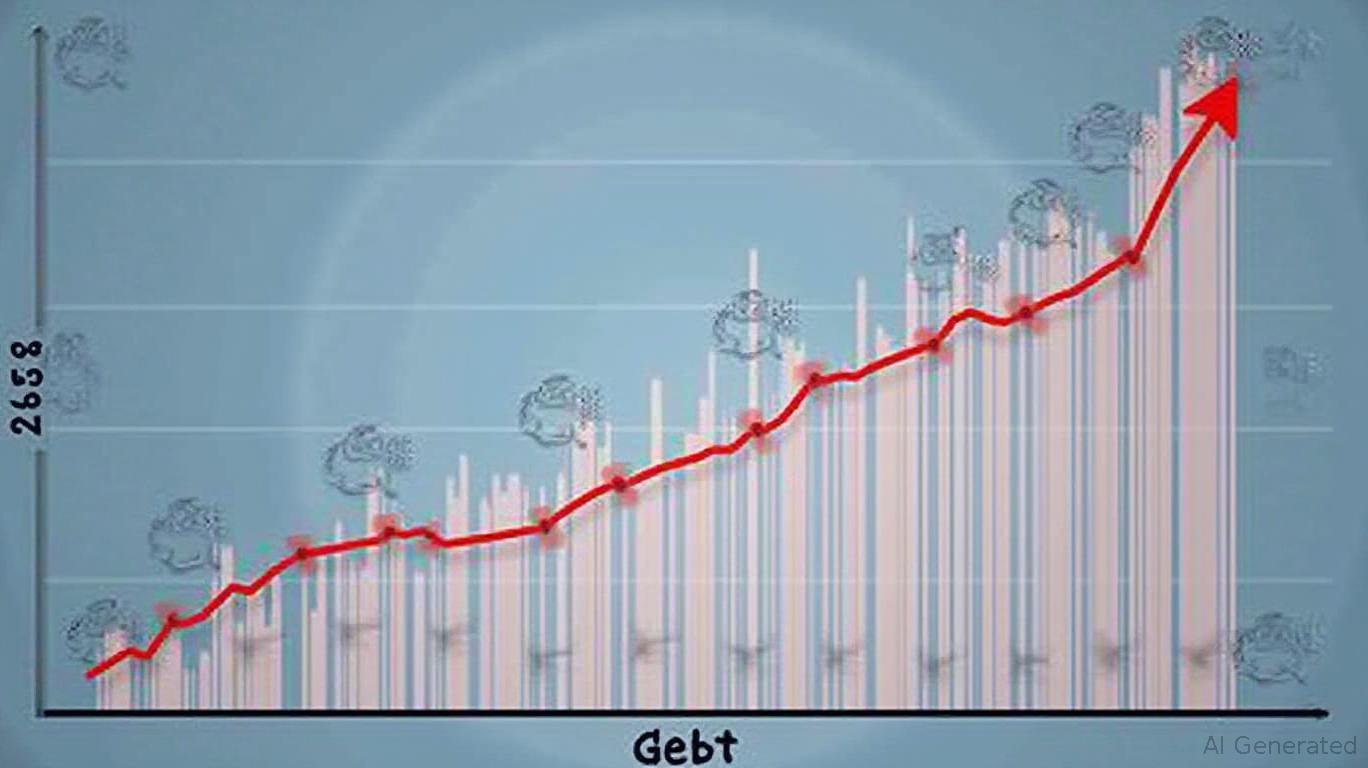Navigating US Fiscal and Trade Policy Uncertainties: A Case for Selective Equity Exposure
The U.S. fiscal landscape is at an inflection point. As the Congressional Budget Office (CBO) projects a $1.9 trillion deficit for fiscal year 2025—rising to $2.7 trillion by 2035—the interplay of debt dynamics, policy shifts, and global trade tensions is reshaping corporate valuations. This environment demands a disciplined approach to equity investing, prioritizing firms with pricing power and global competitive moats while avoiding sectors vulnerable to policy headwinds. Below, we dissect the risks and opportunities, grounded in the CBO's grim fiscal outlook and the evolving corporate landscape.
The Fiscal Crossroads: Debt and Deficits as Structural Risks
The CBO's June 2025 report underscores a stark reality: federal debt held by the public will exceed 100% of GDP in 2025, climbing to 118% by 2035—a post-WWII record. This trajectory is driven by three pillars:
1. Mandatory Spending: Social Security and Medicare outlays, projected to rise to 24.4% of GDP by 2035.
2. Net Interest Costs: Interest payments will surpass defense spending by 2027, consuming an ever-larger share of federal revenues.
3. Revenue Constraints: Despite a temporary rebound in tax receipts (18.3% of GDP by 2035), aging populations and expiring tax provisions limit growth.

This fiscal squeeze will ripple through the economy. Slowing GDP growth (1.8% by 2026) and rising unemployment (projected to hit 4.4% by 2026) amplify the need for companies to navigate macroeconomic volatility while maintaining profitability.
Sectoral Valuations: Winners and Losers in a Policy-Driven Market
The fiscal and trade policy landscape creates a clear divide between sectors. Below, we analyze the implications for key industries:
1. Tech: The Safe Harbor of Innovation
Tech firms, particularly those with global scale and recurring revenue models, are insulated from trade and fiscal headwinds. Their pricing power—driven by software-as-a-service (SaaS), AI-driven solutions, and intellectual property—allows them to offset input costs. Additionally, deregulation trends and federal investment in emerging technologies (e.g., AI, quantum computing) provide tailwinds.
While rising interest costs may pressure rate-sensitive sectors, tech firms with strong balance sheets and high margins can thrive. Consider the resilience of giants like Microsoft or NVIDIA, whose stock valuations have historically decoupled from macroeconomic noise.
2. Healthcare: A Steady Pillar Amid Chaos
Healthcare's demand inelasticity and aging demographics make it a fiscal haven. The CBO's focus on Medicare/Medicaid spending highlights structural tailwinds for providers and innovators. Companies with breakthrough drugs, telehealth platforms, or aging-care solutions (e.g., UnitedHealth, Merck) benefit from both fiscal policy (e.g., Medicaid expansions) and demographic trends.
3. Rate-Sensitive Sectors: Vulnerable to Liquidity Shifts
Real estate, utilities, and consumer discretionary sectors face dual threats: higher borrowing costs and slowing consumer spending. The CBO's projection of rising interest rates post-2027 will squeeze companies reliant on cheap debt, while stagnant wage growth (2.9% by 2035) weakens discretionary demand.
4. Trade-Exposed Industries: The Tariff Trap
Manufacturing and energy firms remain vulnerable to trade policy volatility and commodity price swings. While some may benefit from near-term fiscal stimuli (e.g., energy tax credits), long-term profitability hinges on geopolitical stability—a shaky premise.
Investment Strategy: Focus on Quality, Not Quantity
The path forward demands selectivity. Investors should:
- Prioritize pricing power: Allocate to firms with dominant market share, recurring revenue, and global reach.
- Avoid cyclical traps: Reduce exposure to rate-sensitive sectors and trade-exposed industries.
- Monitor fiscal policy shifts: Track legislative actions (e.g., tax reforms, spending cuts) that could alter sector dynamics.
Tech's earnings resilience—driven by cloud adoption and AI innovation—contrasts sharply with cyclical sectors, where margins are squeezed by inflation and slowing demand.
Conclusion: Navigating the Storm with Discipline
The CBO's grim fiscal forecast is a clarion call for investors to abandon blanket equity bets. Instead, focus on U.S. firms with global competitive advantages—tech innovators, healthcare leaders, and companies with pricing power. While near-term volatility may test patience, the long-term edge of quality equities remains intact. As fiscal and trade policy uncertainties persist, selective exposure to these sectors will be the hallmark of prudent investing in 2025 and beyond.
Stay disciplined. Stay focused. Stay global.

Comments
No comments yet